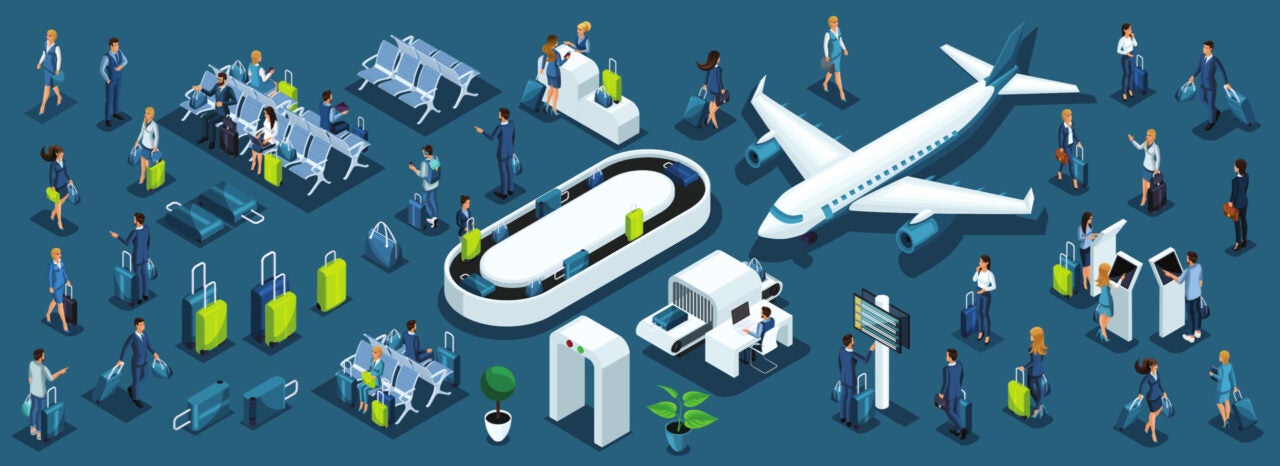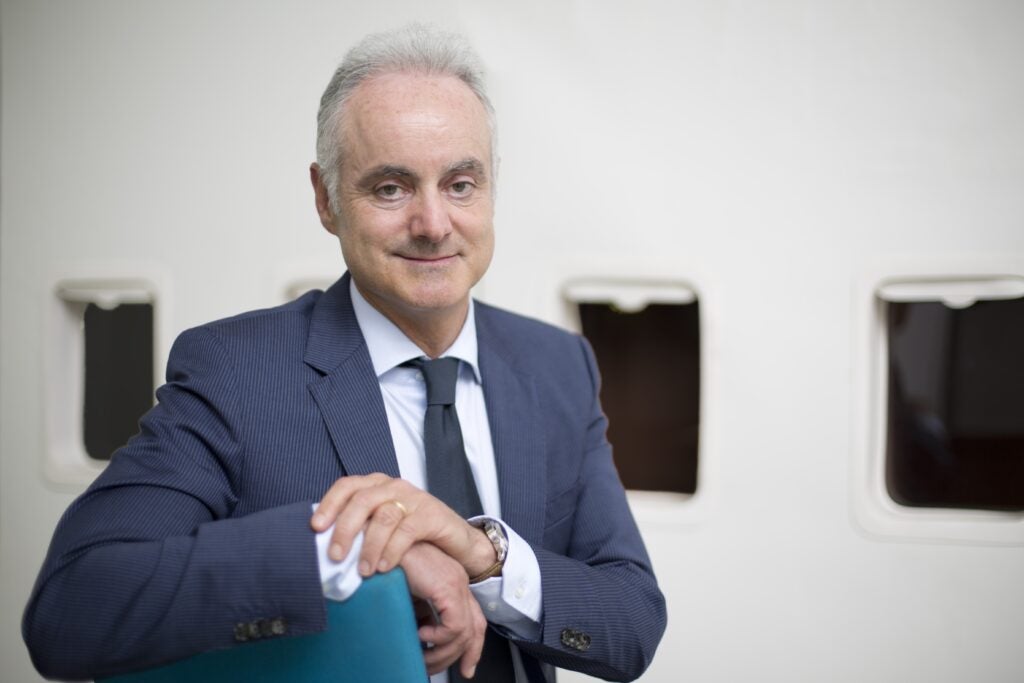
With the Covid-19 pandemic disrupting forever the way that airports and airlines operate forever, change is inevitable. This has seen many airports across the globe adopting a digital shift in the way they work when it comes to passenger processing, security protocol, and much more.
Towards the end of last year information technology company SITA provided the aviation industry with a report titled ‘2021 Air Transport IT Insights’ which highlighted a significant increase in spending from airports and airlines on digitalisation technology. The report collected data from more than 180 IT airport and airline decision makers from 45 countries.
The research carried out by the company shows that the majority of airlines (84%) and airports (81%) are predicted to spend the same or more in 2022 compared to 2021, with areas such as automated passenger processing seeing a significant rise. The report highlights that areas of digitisation as well as sustainability will be the two top key areas of focus for airlines and airports this year.
Frankie Youd talks to Sergio Colella, SITA President Europe, to find out more about the technology the company can offer to assist the industry with this digital shift, as well as how the pandemic has impacted the shift.

Frankie Youd (FY): How can SITA assist the airport and airline industry with the technology and solutions available to assist this digital shift?
Sergio Colella (SC): In the middle of last year, we identified five key areas the air transport industry needs to tackle to drive recovery from Covid-19. These focus areas align directly with the priorities of airport and airline CIOs identified in the 2021 Air Transport IT Insights: investing in digitalization and sustainability to support recovery.
1. Digitalizing the new health requirements at the border
Avoiding long waiting times and lines in the airport as passenger traffic recovers will be one of the key indicators of success in managing health documentation. In response, SITA has automated the process through Digital Travel Declaration – from submission to validation and verification – mitigating forged paper certificates and the inefficiencies of manual document checking.
2. Automating the passenger journey with mobile and biometric solutions
SITA advocates a touchless airport experience, enabled by mobile and biometric technologies, to help reassure passengers, put them in control, make them feel safe, and create a hassle-free journey before, during, and on arrival, and beyond. With our Smart Path solution, successfully rolled out at airports including Rome, Beijing, Athens and iGA, SITA has a proven track record for powering an entirely biometric-enabled, low-touch passenger journey.
3. Delivering a touchless, mobile experience onboard with the next generation of inflight connectivity and digital applications
Previous research shows that more than two-thirds of all passengers opt to use their own device onboard to stay connected or access entertainment. With the touchless, mobile travel experience onboard the aircraft fast becoming the new industry standard, SITA recommends deploying its fast, uninterrupted connectivity onboard to deliver on this growing trend.
4. Driving more collaboration and cost-efficiency across airport operations
The pandemic has put immense pressure on the finances of airlines and airports. This is driving a critical need for cost containment and greater agility in operations at the airport as demand fluctuates and increases.
There is also a focus on driving new revenue streams from non-aeronautical sources.
This has come through clearly when we look at the finding Air Transport IT Insights and from our own experience with our customer airports and airlines.
On the cost-saving side, our focus has been on streamlining processes and drive more efficient operations. Our Airport Management Solution helps airport stakeholders efficiently manage flight operations, optimize fixed and mobile resources as well as facilitate collaborative decision making.
On the revenue side, we launched SITA’s CrewTab Retail which enables airline crews to provide better digital services while also saving costs. One customer airline estimates potential savings of up to US$20k per aircraft per year on labor, storage, fuel and printing.
5. Driving greater efficiency and sustainability in aircraft operations
The 2021 Air Transport IT Insights further reveal that by 2024, a full 88% of airlines intend to make use of new IT&T helping the airline become more sustainable, such as flight path optimization to reduce fuel burn. SITA’s connected aircraft technology is delivering safer, more efficient, and more sustainable aircraft operations.
Are there any other areas which you think will see a rise when it comes to digitalization technology?
In the short term, health certificate verification is a crucial area for digitalization in order to maximize efficiency and reduce wait times and congestion at the airport as passenger traffic increases.
This year’s IT Insights shows that in 2021, staff across 81% of airlines resorted to performing manual verifications of health certificates in paper or scanned format. However, airlines want to automate the process over the next three years, with the majority investing in verification via a mobile app (51%) and nearly half investing in kiosk-enabled health checks (45%).
Nearly half of major airports surveyed plan to implement mobile app-enabled verification. Almost a third have plans for verification through kiosks by 2024.
Additionally, sustainability is a key long-term concern for both airports and airlines, and airlines are showing significant interest in technologies like flight path optimization and digitalization of other cockpit processes to promote efficiency.
“Digital passenger health certification is also an urgent requirement for airports with a need to standardize approaches to verification.”
On the airport side, in addition to prioritizing policies and controls to reduce printing and promote energy savings, more than half of airports are investing in smart building technology and automation by 2024 to support their sustainability goals.
In your opinion if the Covid-19 pandemic had not happened would we be seeing similar data results?
Prior to the Covid-19 pandemic, there was an existing trend towards digitalization, and the pandemic has accelerated this trend.
Had the pandemic not occurred and catalysed a focus on making the passenger journey as low-touch and seamless as possible for health and safety reasons, we might be seeing slightly slower adoption of technologies like self-service via mobile and biometrics supporting the walk-through passenger experience. But there is broad consensus that adoption of these technologies is the way forward for the industry.
Asides from sustainability and digitalization, based on the data which other areas within the industry do you think a growth will appear over the next few years?
Airlines have maintained three top priorities for IT services investments for the next three years: a full 100% of airlines are investing in cybersecurity initiatives, while cloud services (95%) and mobile applications for passenger services (88%) stay high on the agenda as in 2020.
Other IT services are rising significantly in priority, with the majority of airlines investing in major programs for aircraft maintenance (86%), business intelligence (85%), and mobile applications for pilot services (85%). Again, this reflects the strong trend towards digitalization of aircraft and cockpit to drive efficiencies.
Due to the increasing dependence on technology, digital services, and remote work patterns, it is not a surprise to see cybersecurity initiatives (94% of airports investing), cloud services (86%), and inhouse virtual and remote IT services (83%) as high priorities for airports over the next three years.
As the industry enters the recovery phase, airports are also placing new IT services at the forefront as they focus on offering seamless health and safety solutions to enhance the passenger experience, while optimizing resources and infrastructure as air traffic picks up but remains volatile.
“As travel becomes more connected and intermodal, having unified digital systems that simplify the passenger journey across land, sea and air will become increasingly important.”
Airports have identified self-service processes (84% of airports with investment plans) and touchless solutions for both passengers and staff (83%) as key for boosting the safety and efficiency of airport touchpoints. Supplementing this, Internet of Things initiatives are seeing significant investment (83%), aimed at smoothing the passenger journey through the airport via beacons or sensors powering way finding solutions as well as personalized messages regarding facilities, baggage, and more.
As travel becomes more connected and intermodal, having unified digital systems that simplify the passenger journey across land, sea and air will become increasingly important.



